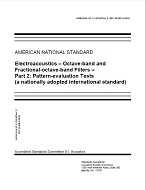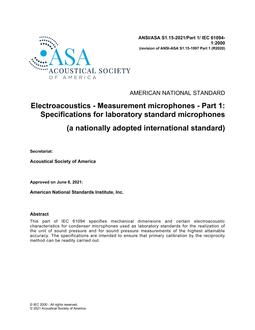Click here to purchase
This part of ANSI S2.72 / ISO 2631 defines methods for the measurement of periodic, random andtransient whole-body vibration. It indicates the principal factors that combine to determine the degreeto which a vibration exposure will be acceptable. Informative annexes indicate current opinion andprovide guidance on the possible effects of vibration on health, comfort and perception and motionsickness. The frequency range considered is
– 0.5 Hz to 80 Hz for health, comfort and perception and- 0.1 Hz to 0.5 Hz for motion sickness.
Although the potential effects on human performance are not covered, most of the guidance on wholebodyvibration measurement also applies to this area. This part of ANSI S2.72 / ISO 2631 also definesthe principles of preferred methods of mounting transducers for determining human exposure. It doesnot apply to the evaluation of extreme-magnitude single shocks such as occur in vehicle accidents.This part of ANSI S2.72 / ISO 2631 is applicable to motions transmitted to the human body as a wholethrough the supporting surfaces: the feet of a standing person, the buttocks, back and feet of a seatedperson or the supporting area of a recumbent person. This type of vibration is found in vehicles, inmachinery, in buildings and in the vicinity of working machinery.
Product Details
- Published:
- 05/13/2002
- ANSI:
- ANSI Approved
- Number of Pages:
- 47
- File Size:
- 1 file , 1.1 MB


